Wilderness Adventures
Moose hunting in Norway - Hunting in the nordic wilderness
Hunting moose, in the Norwegian wilderness is one of the great Nordic hunting experiences. Take a long trip up the coast of Norway – first by plane, then car and then boat – where a small group of hunters head out in search of success.
“We drive for four hours north from Trondheim, until the road ends at a small boat jetty. A motorboat from here takes about an hour more to the hunting grounds. There are no roads into or within the area itself, so everything we shoot has to be butchered in situ, carried down and taken out by boat.”
The promise of adventure is unmistakable, even viewed from the warm Danish kitchen of the experienced hunter 1,000 kilometers to the south. While we have coffee and breakfast, he explains: “We are a consortium of seven hunters, all good friends, six Norwegians and me – and we’ve been hunting together in the area for almost 20 years.”
On every visit to the area, our hunter has shot at least one moose, and often several. The moose are taken during the rut and the hunter has learned to imitate the bull moose’s call by mouth or using various devices. His trophy room houses two large moose he felled at the same place on the same day in Norway. Few hunters have earned the right to put this on their list of achievements, especially two such large palmated sets as these.
Heading north
It is late in the evening when we meet up at Denmark’s Kastrup Airport and catch the last flight to Trondheim. We spend the night at the airport hotel and drive the last bit of the way to the hunting grounds in the company of a Norwegian hunter who has come by car all the way up from Oslo. On the way, we stop to buy a week’s worth of supplies, because everything has to be taken with you by boat out to the grounds.

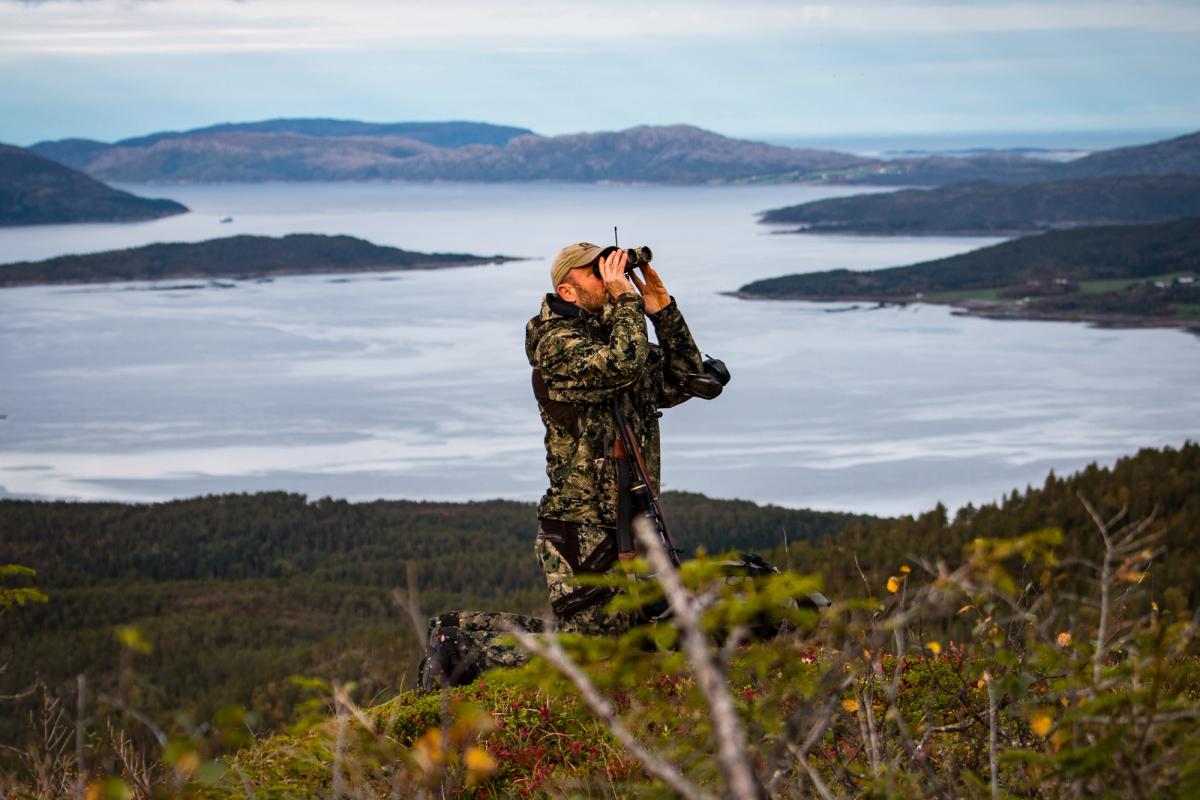
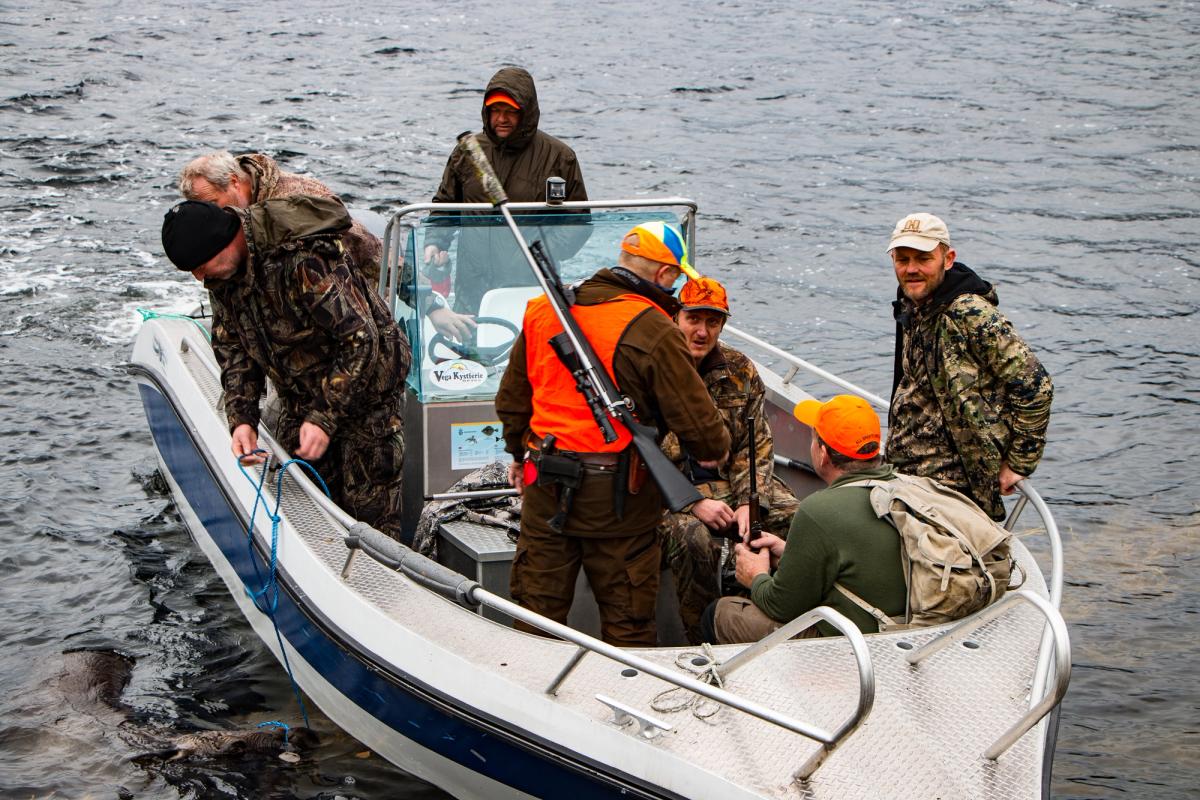
We reach the jetty at around noon and begin loading gear, grub and guns onto the boat. There’s a strong wind, but from ahead, so the fjord crossing is not as bad as we’d feared. We make shore in a little natural harbour between the rocks, not far from the outlet of a small river. Our accommodation is a largish, old wooden cabin. The family that owns the cabin and its grounds are not hunters themselves, but come each summer and use it as a base for hiking in the mountains. Apart from them, and the hunters who are here for one week a year, the place is deserted. We get water from the stream, the toilet is outside, and the electricity we need to recharge hunting radios and the like is supplied, for brief periods only, by a diesel generator that came with us.
Planning starts almost straightaway, and most of us are keen to take a trip into the mountains that very afternoon, just for a taste of what’s to come. After a quick discussion and a rapid check of the rifles, we are on our way up.
The hunt is on
The weather is good and we move ahead quietly. In the first few hundred metres, we cross a couple of clearings, the only visible evidence of the original settlers' attempts at cultivation during the few months of the year when that is possible at these high latitudes. Dense birch groves and grasses quickly give way to rocks and stunted pines.
From time to time, the experienced hunter stops and gives a sotto voce account of exciting events from previous hunts in the places we pass. As always when hunting, calm and silence can quickly be replaced by an instant opportunity, so we must be constantly at the ready. We also keep an eye out for fresh moose tracks or droppings. Nothing appears to be really fresh, nor do we see any moose this afternoon. The experienced hunter points out some substantial fraying, where antlers have rubbed against tree bark, and we try out our moose calls, to no effect.
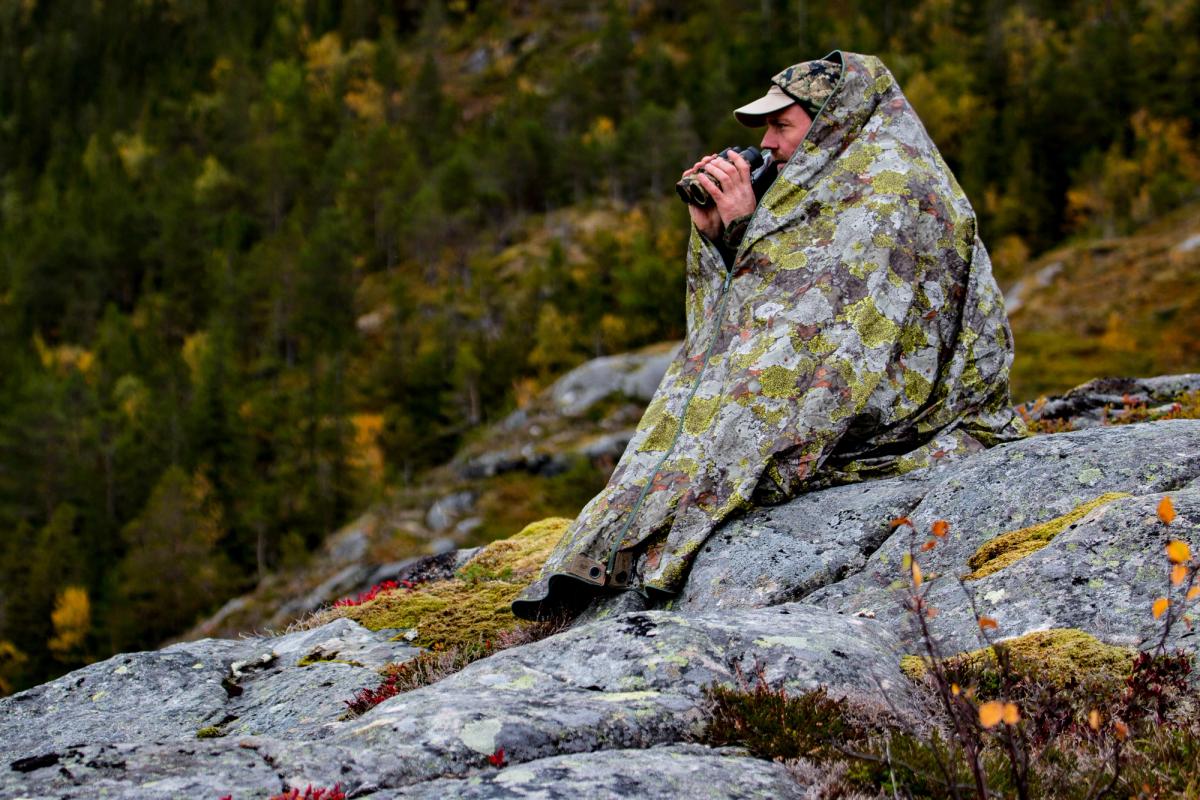
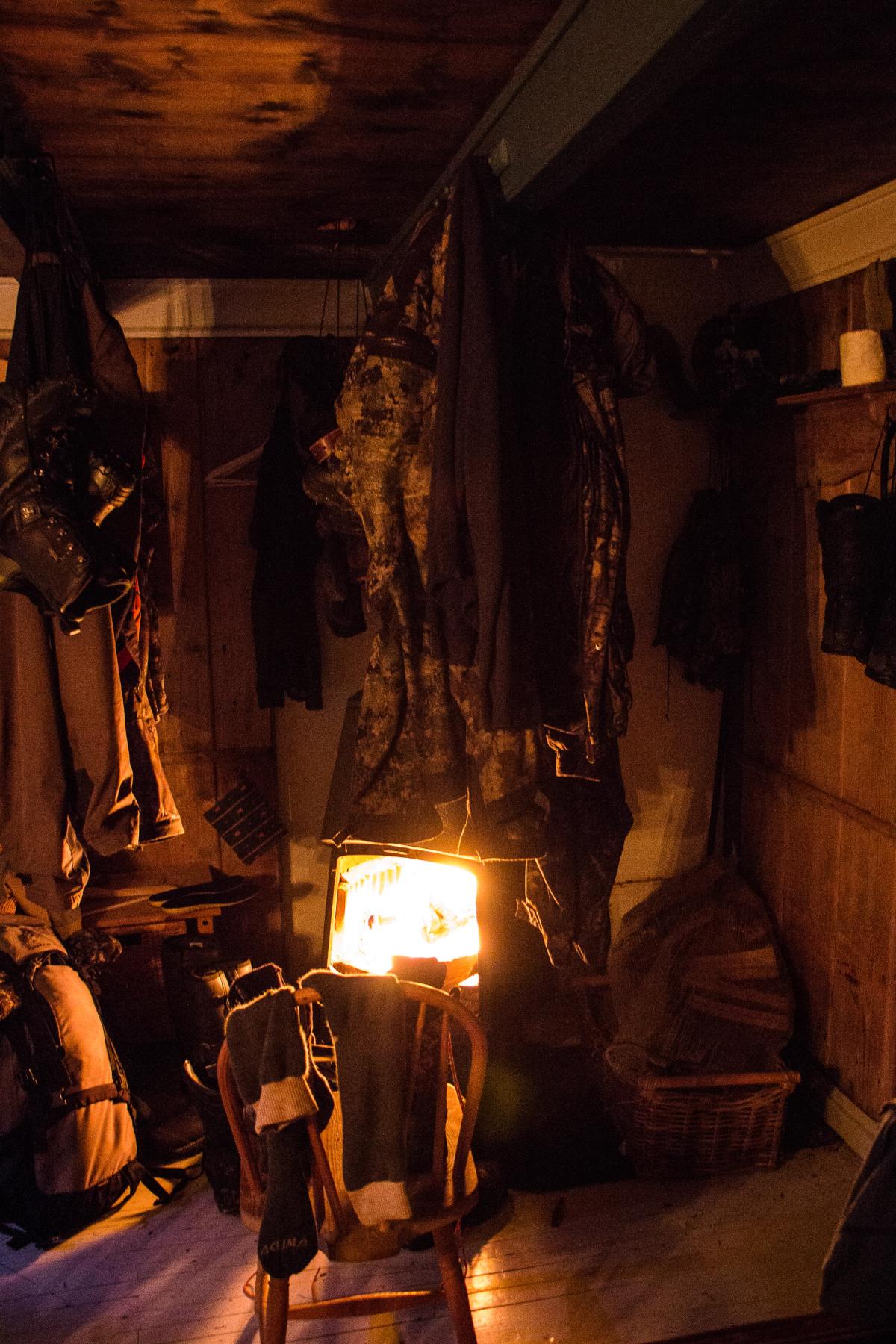
When we return to the cabin a couple of hours later, we’ve had plenty of fresh air and tested our leg muscles with a few hundred metres of elevation change. This will pay dividends in the days to come. We are soon all gathered together again, and some of the hunters have seen moose on the mountains. One hunter made it to the top of one of the highest points in the terrain. We listen carefully to what he has to say, because we ourselves will heading there tomorrow morning. The trip up takes around two hours. The hunter did not have long up there today, but he still managed to spot a bull and a cow on the slope beyond the pass, without getting a shot.
The evening is spent relaxing and planning in the hunting lodge. Although the seven hunters often only meet up for this one week a year, there is clearly a close friendship. In the shadows of the many candles that light up the common room, and with the fireplace roaring in the background, we have dinner and recount hunting stories and news from home. At one point, one of the party tumbles back onto the sofa which will also be his bed, and immediately starts snoring. Soon, we all wish each other good night and go to get our heads down. Sleep we must, because tomorrow we hunt!
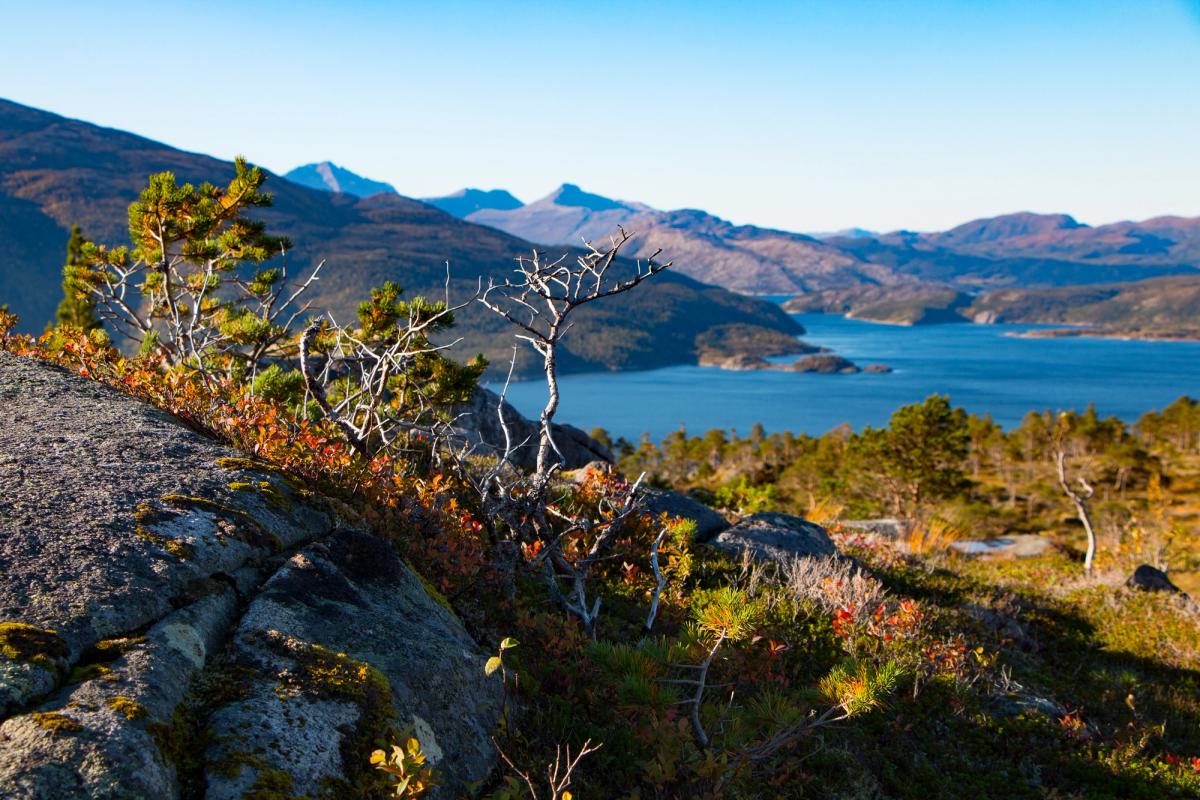
The high pass
The alarm goes off at 05:30. It’s dark out, and raining. We are quickly into our hunting gear, and the rest of the cabin is quietly waking as we make breakfast and prepare our packed lunch. One by one, still sleepy and grumbling Norwegians in string vests and woollen robes make their appearance. After a trip to the outside privy, none of them seem to be in a hurry to get out into the elements. But it doesn't matter, because the options here range from stalking to stand hunting, so the hunters can basically do as they please. The only thing we agree in advance is who is hunting in which area. Everything else is arranged in real time over the radio, which is an essential tool with these long distances.
At a quarter past six we are out of the door. Just before sunrise, the ascent to the uplands begins abruptly. The next few hours of climbing are about striking a balance between maintaining an acceptable heart rate and not getting soaked with sweat or water from the heavens. The ascent is often steep and brutal. The squalls tumble in over the mountain and we stop each time to put on or take off our outer layers. Membrane clothing is great when it rains, but in the mountains you quickly get hot under the outer shell and start to sweat. There are no man-made paths here, but we follow clear animal tracks.
Once we finally reach the pass and are able to survey the surrounding hillsides with binoculars, we change into dry clothes from our rucksacks. Soon after, we both sitting under our ponchos, tucking into a morning snack. The pass is almost at the top of a long ravine that runs from high on the mountain all the way down to the coast, which we can see a few kilometres below. Deep in the ravine we can hear the river bubbling away beneath us. Over the years, the experienced hunter has shot a total of eight moose from this pass, and several more on the way up or down.
We have plenty of time to chat about the two bulls he shot at this exact spot. He had been sitting here, decoy calling, when a superb bull presented itself as a target. As he reached the fallen animal and was about to start butchering, another bull appeared, which a quick call on the radio confirmed he was also allowed to take.
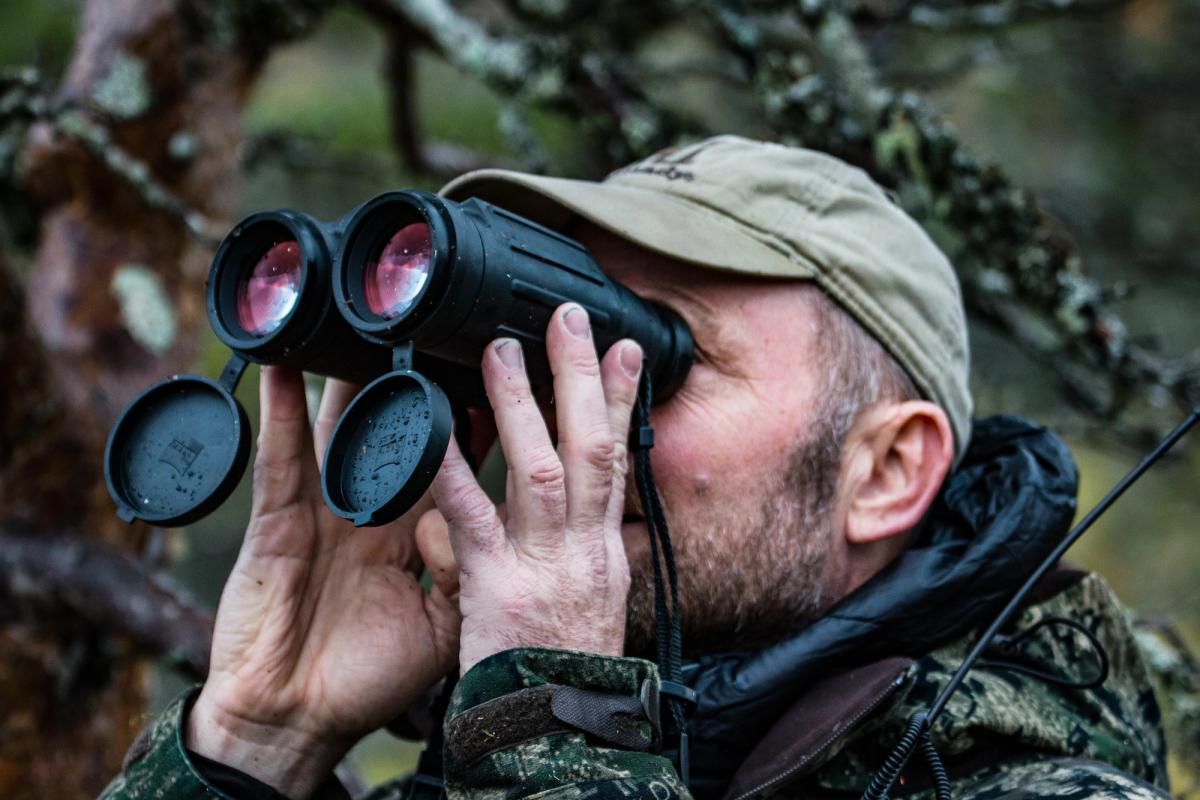
A shot rings out in the mountains
The silence is suddenly broken by a shot ringing out in the mountains. A hunter soon reports by radio that he has taken a large moose calf. Not long after, a couple more shots are heard, and another calf has been downed, followed by a cow. All this takes place some distance below us, but the experienced hunter is on the lookout nonetheless. Often in such situations, the moose run upwards and that might bring them towards our mountain pass.
It is no more than 20 minutes before a moose cow is quietly trotting up the incline opposite us. Our quota extends to two adult animals and four calves, and the experienced hunter quickly decides that this fine breeding specimen should not be shot, at least not today. We are enjoying just looking at the animal, when something unexpected occurs: the moose obviously disturbs two others that must have being lying there since we arrived. A cow and what looks like a six-pointed bull run in the opposite direction to the first cow, down the mountain.
The experienced hunter is ready, but with a downward angle of 45 degrees and the target on the run, we must not shoot, so the moose disappears quietly in the rain. We remain seated most of the day and are the last to return to the cabin, at five o'clock, with the calves already hanging in the boathouse. Inside the cabin, the Norwegians are in full swing. Wet hunting clothes hang from the ceiling everywhere, and the smell of gear, fresh leather grease and candles from the day before is now replaced by that of beer and something more acrid. Soon, the smell of the hunters and wet gear blends with that of smoked reindeer and the smoke from the large steaks roasting in the kitchen. Meat hunting requires meat.
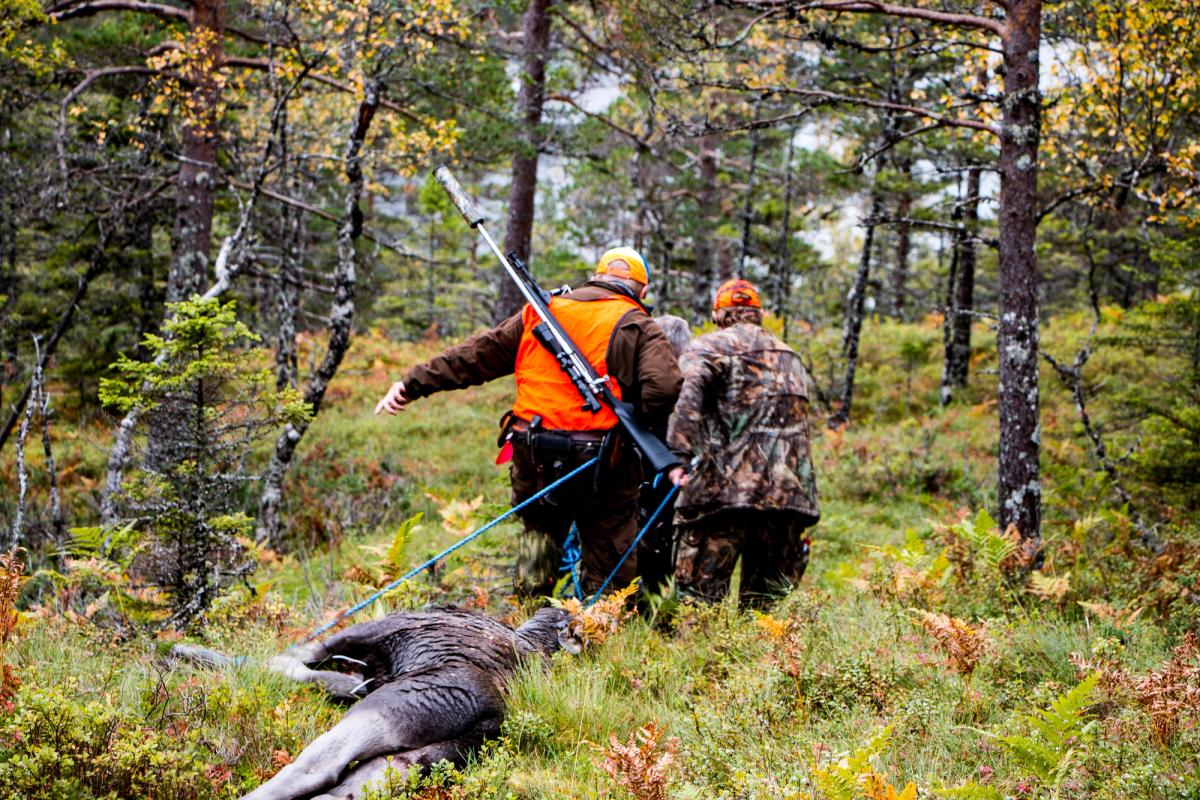
In the following days, we see lots of moose and help carry two calves down the mountain, without having even fired a shot ourselves. One morning brings the only sunny weather of the trip and we decide to climb all the way to the top of the mountain. According to the map and the experienced hunter's memory there should be a small lake up there with lovely mountain trout. The lake is still there and I have soon landed the first fine fish. Two more are caught before we have a nap in the sun. When we awaken, the clouds have returned. On the way over the pass, it blows so hard that you can lean 45 degrees into the wind and not fall, and then the rain is soon with us. In the mountains, the weather can change in an instant.
Full quota
The fifth and final day of the hunt arrives, and we again decide to go up to the high pass. We have two adult animals left on the quota, and we now reckon that the rut, which we hoped to coincide with, has probably not fully started. It is late September and hasn’t really got cold enough in the mountains yet.
The ascent to the pass is wet once again, but we make it and install ourselves. Suddenly, my eye catches a movement: A lone moose cow is walking among the trees up the mountain some 175 metres away. "There!" the experienced hunter whispers suddenly, picking up the rifle and settling down for a shot. The cow crosses through an area of dense vegetation and when she comes out the other side, she moves away from us and disappears. The experienced hunter makes a couple of moose calls and the cow suddenly reappears beyond the trees. When she stops, the hunter fires the first shot and the cow reacts strongly to being hit and takes a couple of steps down. He shoots again. The cow wanders between a pair of trees and disappears. Seconds pass and everything goes quiet.
The cow has fallen and the reaction up here at the pass is palpable pleasure. After an hour of climbing and a trip through the river, we reach the place where the shot hit, scarcely 200 metres from our position as the crow flies. There is a lot of blood and following the trail to the moose is easy. She has ended up between two small pine trees.
She is a magnificent animal and, although the experienced hunter has shot many moose, we are both full of admiration for this great grey creature. We sit by the moose a bit before making a call on the radio. Having found the carcase, we need help carrying it down. The experienced hunter then butchers the carcase in situ, on top of the hide, while we hang various body parts to dry in the surrounding trees, so as to quickly form a dry, protective film around the meat.
By the time a couple of the other hunters reach us with empty rucksacks and carrying frames, the moose is fully butchered. Together we haul the many kilos of meat down to the water and the awaiting boat, which carries us back to the cabin. When we arrive at the boathouse, we find a young four-pointed bull has also been taken, and with that the quota is full. This year’s moose hunt is over.
Moose hunting in the blood
At sunrise on the next day we are sitting in the motorboat on our way back to civilization, and taking stock. This kind of hunting is extremely appealing. It is primarily hunting for meat, and many of the Norwegian hunters simply have no interest in taking a trophy home. It doesn’t yield easy results, it demands experience and knowledge of the area. The impressions and experiences we take away are overwhelming. This is hunting that gets into your veins and we dream of returning to Norway and its magnificant game and wilderness.
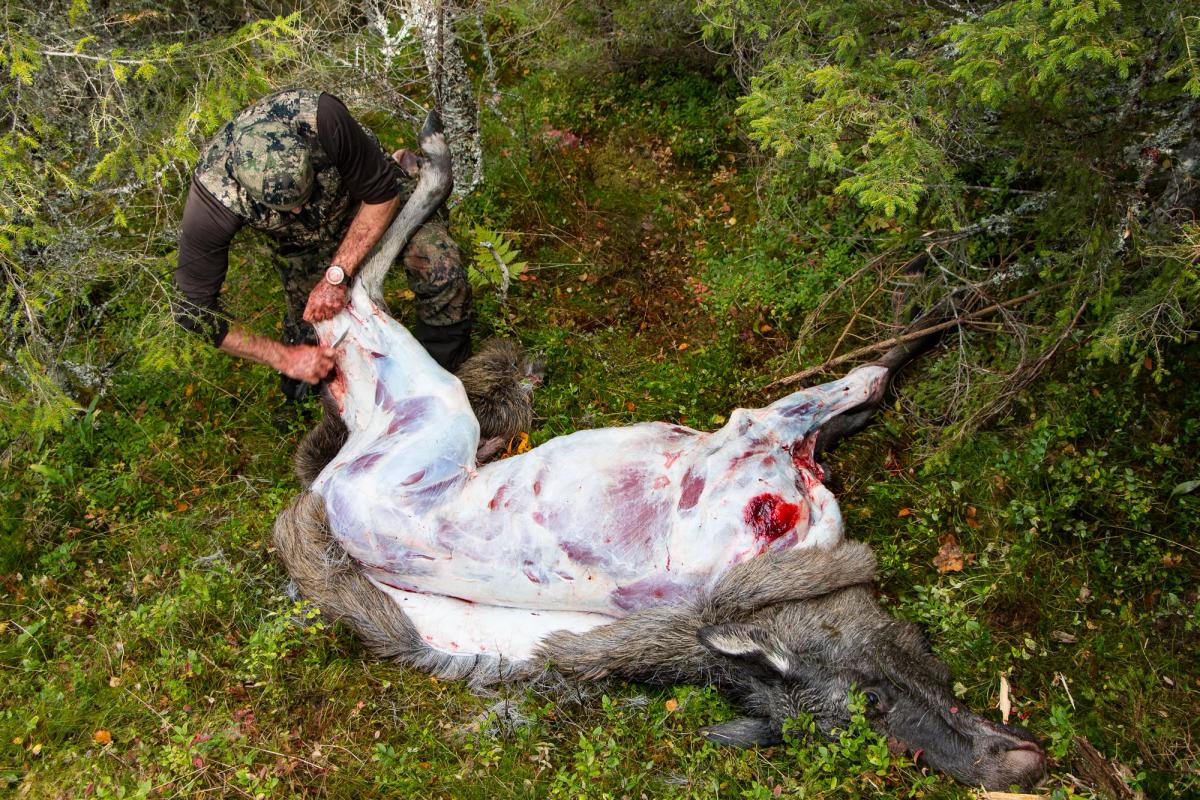
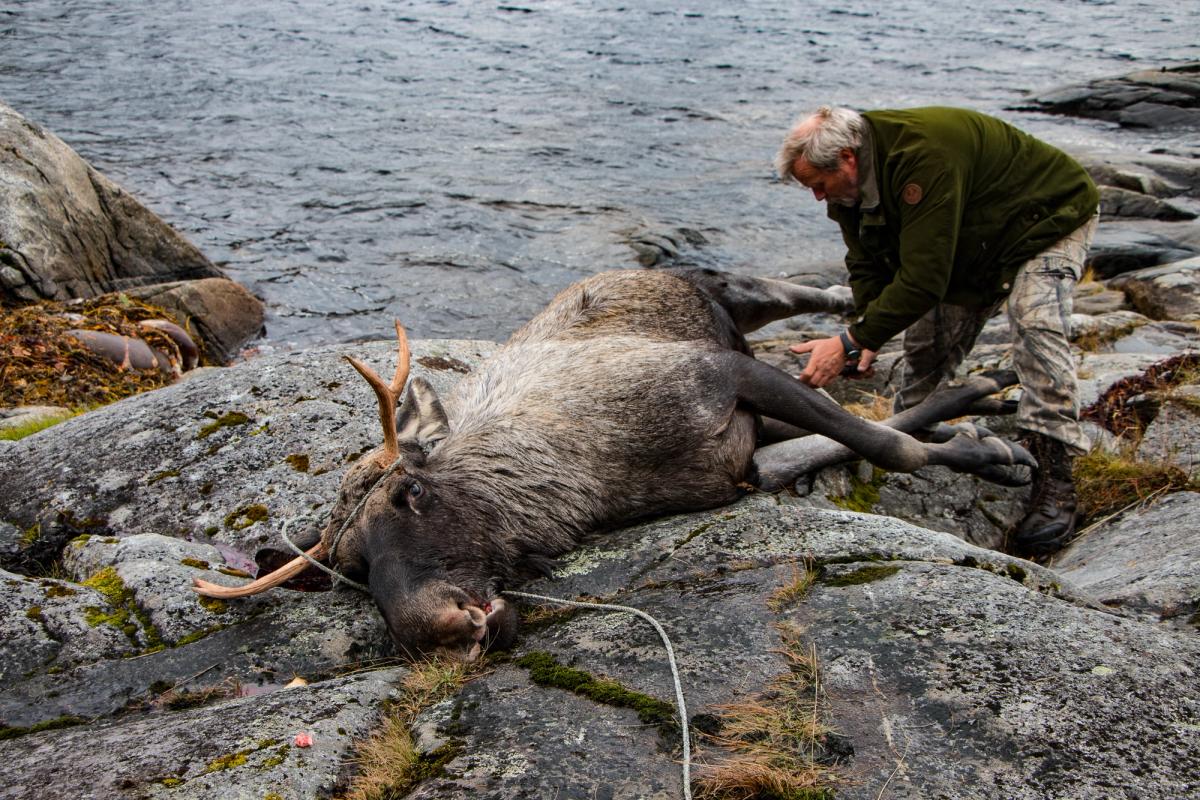
Gear for moose hunting in Norway
If you are going out into the wild, your focus should be on lightweight gear and layered clothing. Take only the essentials in your daypack and make sure you have equipment for an emergency overnight bivouac if the weather suddenly changes.
Your daypack might contain:
- Lightweight water bottle, to fill during the day
- Spare dry merino sweater and beanie
- Down or fleece jacket, to don when sitting still
- Lightweight, thin, waterproof jacket and trousers
- A rain cape that can act as a shelter when sitting and as a survival bag in an emergency
- High-energy, high-fat lunch and snacks
- Head torch and compass
Networking is everything
In Norway, roe deer and anything larger are classed as ‘big game’ and require a hunting permit. The sites below offer good advice about hunting moose/elk and deer:
- www.hjortevilt.no
- www.miljodirektoratet.no
- www.njff.no
- www.inatur.no
- www.statskog.no